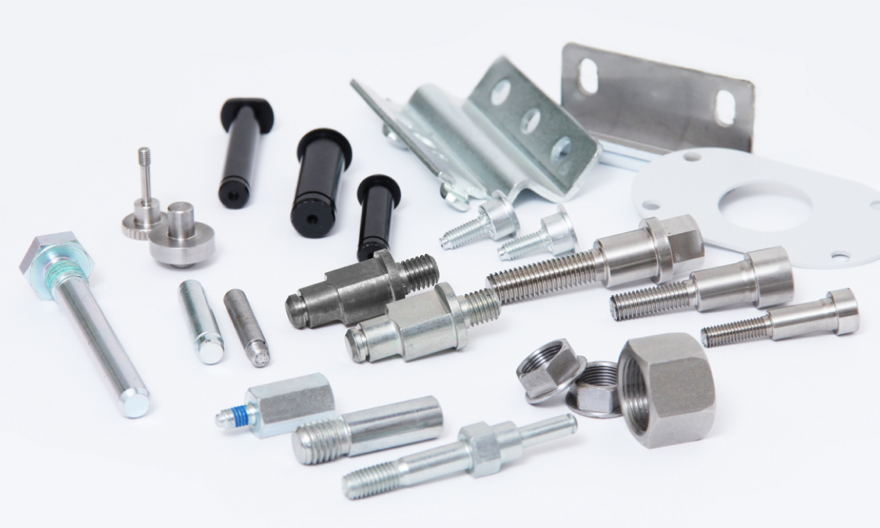
Tools are essential in any workshop, whether it’s a hobbyist’s space or a professional environment. Fastening tools, in particular, play a key role in connecting, securing, and stabilising various components in numerous applications. These tools form the backbone of countless tasks, from assembling furniture to maintaining machinery. With proper care, fastening tools can last for many years, but neglect can lead to quick deterioration, even for the sturdiest tools.
Let’s explore key practices to extend the lifespan of these essential items, making sure they remain ready for every job.
Why Tool Maintenance Matters?
Tools reflect the hands that use them. Proper upkeep goes beyond cleanliness—it’s about preserving function, avoiding mishaps, and ensuring every turn or twist counts. Fastening tools that fail can damage materials or compromise safety. A well-maintained tool, on the other hand, ensures every connection holds firm.
Some might assume these tools can withstand anything. They’re often built tough, yes, but not indestructible. Exposure to moisture, dirt, improper force, or careless storage shortens their lifespan significantly.
Understand the Tool’s Purpose
Every tool carries a purpose, often specific to a task. Learning how to use each one correctly forms the base of good maintenance. Misusing fastening tools by applying them to jobs outside their design can strain their mechanisms.
Take torque wrenches, for example. They tighten to a specific force. Using them like a regular spanner stretches their internals and throws off the calibration. When you use tools for their intended roles, they last longer and perform better.
Keep Tools Clean and Dry
Dirt, grime, and moisture creep into moving parts. Over time, they create friction, slow performance, and cause rust. Rust doesn’t just look bad—it weakens metal and makes surfaces rough. Once corrosion starts, it spreads.
After each use, wipe down tools with a clean cloth. If exposed to mud, sawdust, or metal shavings, rinse or brush away the debris. Always dry tools thoroughly. Leaving them wet, especially overnight, invites rust.
Apply Lubrication When Needed
Not all tools require oil. But some, especially those with hinges or ratchets, benefit from light lubrication. A drop of oil in the right place helps parts move smoothly, prevents squeaking, and reduces wear.
Use the correct type of lubricant—light machine oil suits most hand tools. Avoid over-lubrication, which can attract dust and form sticky patches. When oil builds up, it holds grit, causing more harm than good.
Apply oil sparingly, then wipe away any extra. Lubricate tools only after cleaning. Trapped dirt combined with oil forms an abrasive paste, grinding parts down over time.
Inspect Before Every Use
Even the best tools degrade over time. Before each job, check tools for signs of wear or damage. Look for:
- Cracked handles
- Bent shafts
- Worn-out threads
- Loose rivets
Using a damaged tool can slip, snap, or harm the material you’re working on. Replace worn-out parts where possible. Some tools offer spare handles, tips, or springs. If not, retire the tool to prevent accidents.
Avoid Excessive Force
It’s tempting to add pressure when a nut won’t budge or a screw won’t turn. But pushing tools beyond their limit causes long-term harm. Wrenches warp. Screwdrivers twist. And the tool you count on may give up mid-task.
Use penetrating oil or heat for stubborn parts rather than brute strength. Choose the right size and type of fastening tool to avoid slipping and damage.
Many tools wear down due to incorrect force, not overuse. Learning to feel when to stop can protect both your tools and your workpiece.
Choose the Right Tool for Each Job
Fitting tools and fastening tools, and their uses, vary across trades. Each tool fits a certain role. Using the wrong one risks poor results and shortens tool life.
For instance, flathead screwdrivers should never be used on Phillips screws. Adjustable spanners don’t replace fixed-size wrenches. Choosing well ensures even pressure, proper grip, and less tool fatigue.
Over time, the right match leads to smoother work, cleaner finishes, and better tool longevity.
Avoid Mixing Tools with Harsh Substances
Solvents, glue, paint, and even water can damage certain tool components. Rubber grips crack, metal corrodes, and moving parts seize. Keep tools away from chemical spills. If exposure happens, wipe them clean right away.
Designate separate tools for messy jobs. For example, reserve one set of pliers for plumbing sealants. This helps preserve your main kit for clean, general use.
Keep Tools Organised on the Job
Work sites get busy. Tools scatter, fall, or get stepped on. Creating habits around placement makes tools easier to find and less likely to suffer damage.
Use magnetic trays, belt holsters, or tool rolls to manage your tools. Return each one to its place after use. When tools stay off the floor and out of harm’s way, they last longer.
Sharpen, Realign, and Replace Parts
Many fastening tools come with replaceable tips or blades. Keep spares on hand. If a screwdriver tip rounds off or a thread chaser loses form, don’t toss the whole tool. Swap the worn part for a fresh one.
Some tools benefit from sharpening or realignment. Files, taps, and dies work better with occasional care. Taking time to maintain edges and alignment ensures reliable performance across projects.
Visual Guide: Storage Methods and Their Benefits
Proper storage prevents damage and keeps tools within easy reach. The table below outlines common methods and their advantages:
| Storage Method | Benefits |
| Tool Chest Drawers | Protects tools from dust; locks add security |
| Pegboard Wall Mounts | Keeps tools visible; easy access |
| Tool Rolls or Pouches | Good for travel; avoids clanking or scratches |
| Magnetic Trays | Ideal for small tools and fasteners |
| Open Shelving Bins | Useful for heavy or rarely used tools |
Organised storage keeps each item safe and ready, supporting longer life with less stress
Train Every User
In shared workspaces, multiple people handle the same tools. If everyone understands proper use, tools stay in better shape. Provide short sessions on how to handle, store, and clean tools.
Label drawers or stations clearly. Make cleaning supplies easy to reach. Encourage a culture of respect for the equipment. When people take pride in their tools, they treat them better.
Keep Track of Usage
Logging tool use might sound unnecessary, but it reveals patterns. If one tool fails often, investigate how it’s handled. Maybe it’s used incorrectly or stored poorly. Tracking also shows when tools need replacement or servicing.
Even a simple chart on the wall listing when tools were last cleaned or inspected helps.
Final Thoughts
Fastening tools and their uses support projects big and small. They help build, repair, and create with purpose. Knowing how to use them well reflects care for the craft itself. When tools work as expected, tasks feel smoother, safer, and more satisfying.
By respecting your tools, you ensure they return the favour. Each turn stays true. Each grip remains strong. And every job becomes a little easier.
So whether you’re tightening a hinge or assembling a complex structure, remember: your tools work as hard as you treat them. Make that care count.
For More Information : Chee Fatt Co. Pte Ltd




